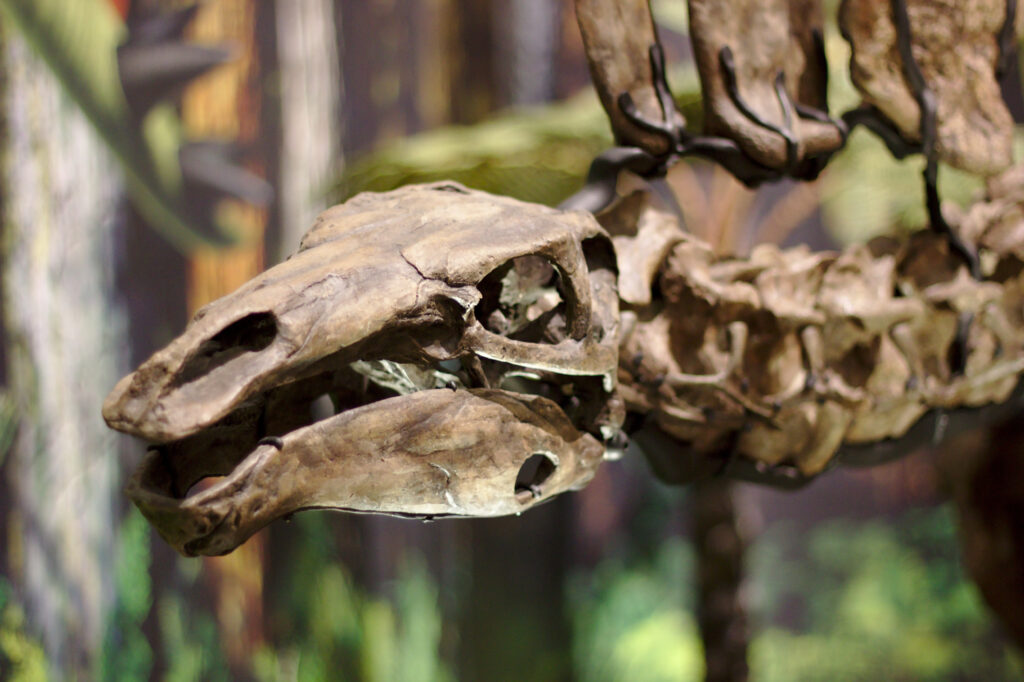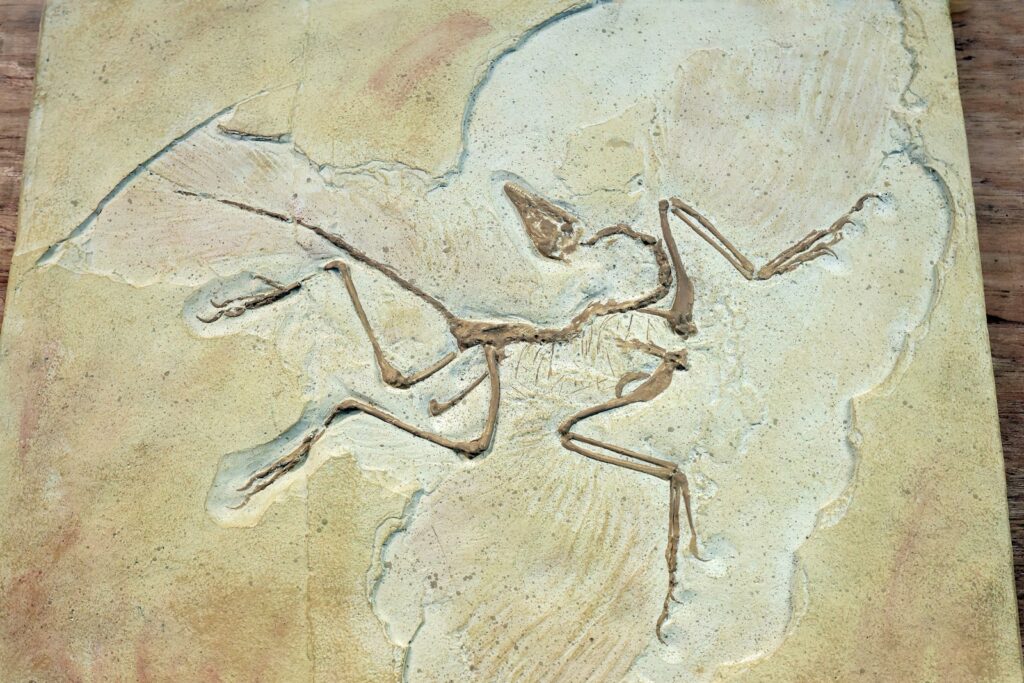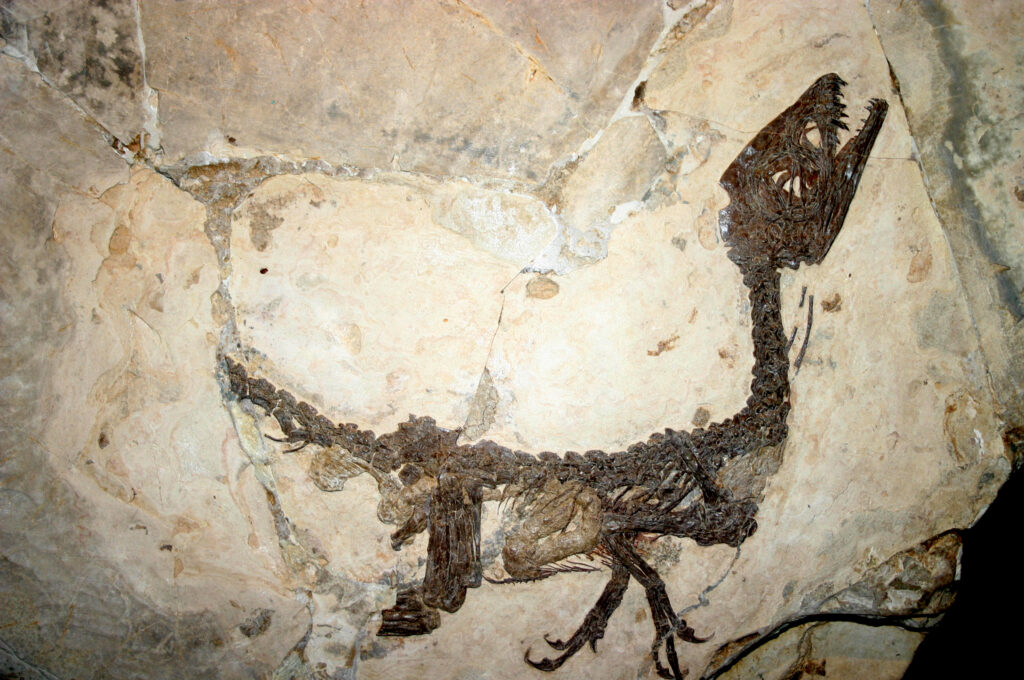The Rocky Mountains hold secrets that stretch back millions of years, where ancient predators once stalked their prey across landscapes that would become Colorado’s rugged terrain. Denver’s Museum of Nature & Science stands as a gateway to this prehistoric world, housing one of the most impressive dinosaur collections in North America. Here, visitors can come face-to-face with the very creatures that dominated Earth long before humans walked the planet.
The Prehistoric Playground of the American West

Colorado’s geological history reads like a time capsule, with layers of rock revealing the story of creatures that lived here over 150 million years ago. The Morrison Formation, which stretches across several western states, has yielded some of the most significant dinosaur discoveries in North America. This ancient landscape was once a lush, subtropical paradise where massive sauropods grazed alongside fearsome predators.
The region’s unique geological conditions created perfect fossilization environments, preserving not just bones but entire ecosystems. Today, paleontologists continue to uncover new species from Colorado’s fossil-rich deposits, making the state a hotbed for dinosaur research. The Denver Museum serves as the perfect showcase for these incredible finds, bringing together specimens from across the region.
Allosaurus: The Crown Jewel of Ancient Predators

Standing nearly 30 feet long and weighing up to 4,000 pounds, Allosaurus represents one of the most formidable predators ever discovered in Colorado. The museum’s Allosaurus skeleton, meticulously assembled from bones found in the Morrison Formation, showcases the raw power of this Jurassic hunter. Its massive skull, armed with razor-sharp teeth up to four inches long, tells the story of a creature perfectly adapted for bringing down prey many times its size.
What makes the Denver specimen particularly remarkable is its completeness – over 80% of the skeleton was recovered, providing unprecedented insight into how these predators moved and hunted. The distinctive ridges above its eyes gave Allosaurus an almost demonic appearance, while its powerful legs could propel it at speeds reaching 25 miles per hour. Visitors often find themselves mesmerized by the sheer size of the skull, which alone measures over three feet in length.
Stegosaurus: Colorado’s Official State Fossil
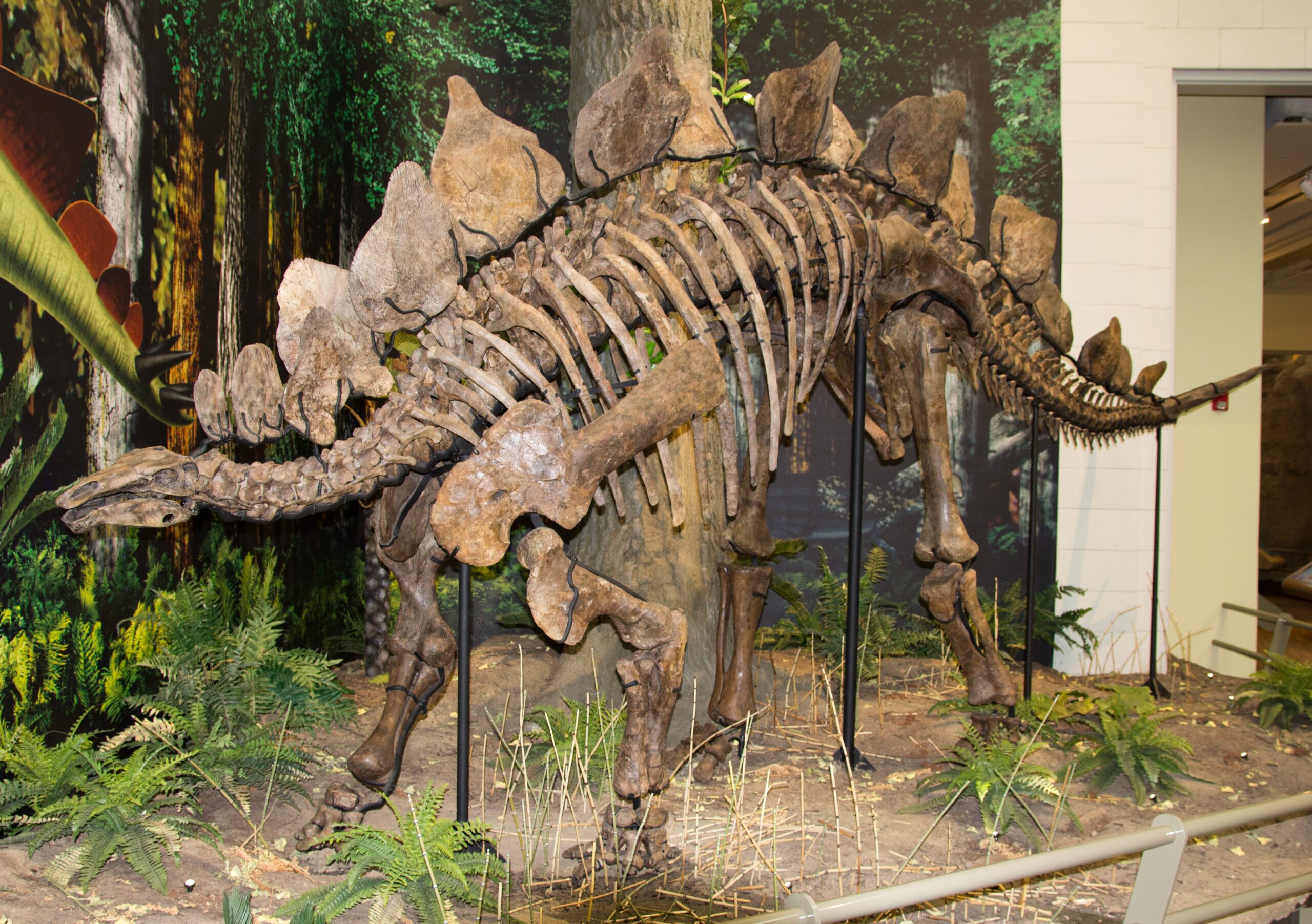
Colorado takes such pride in its dinosaur heritage that Stegosaurus was officially designated as the state fossil in 1982. The Denver Museum houses several spectacular Stegosaurus specimens, including juveniles and adults that showcase the full life cycle of these armored giants. These herbivores, with their distinctive double row of plates running along their backs, represented one of nature’s most successful defensive strategies.
The museum’s interactive displays allow visitors to understand how these massive plates might have functioned – whether for defense, temperature regulation, or display purposes. Recent research suggests the plates could change color, much like a chameleon, adding another layer of complexity to these already fascinating creatures. The four-spiked tail, known as a thagomizer, could deliver devastating blows to any predator foolish enough to attack from behind.
The Raptor Revolution: Velociraptor and Its Cousins

While Hollywood may have exaggerated their size, the real velociraptors and their relatives were no less impressive as hunters. The museum’s raptor collection includes several species that showcase the incredible diversity of these intelligent predators. Their skulls reveal large brain cavities relative to body size, suggesting these dinosaurs possessed problem-solving abilities that set them apart from other reptiles of their time.
The sickle-shaped claws on their feet could grow up to five inches long, functioning like switchblades for slashing prey. Recent discoveries have revealed that many raptors were covered in feathers, not for flight but for insulation and display purposes. The museum’s reconstructions show these creatures in their full feathered glory, a far cry from the scaly monsters often depicted in popular media.
Tyrannosaurus Rex: The Ultimate Predator Experience

No dinosaur exhibit would be complete without the king of predators, and Denver’s T. rex specimens do not disappoint. Standing 13 feet tall at the hip and stretching 40 feet from nose to tail, these massive predators dominated the landscape during the final chapter of the dinosaur era. The museum’s T. rex skulls, some measuring over five feet in length, showcase teeth that could crush bone with a bite force exceeding 35,000 pounds per square inch.
What’s particularly striking about the Denver specimens is the evidence of their hunting behavior preserved in the bones themselves. Bite marks on other dinosaur fossils match perfectly with T. rex teeth, providing concrete evidence of their predatory lifestyle. The museum’s immersive displays allow visitors to hear the thunderous footsteps of these giants, creating an experience that brings the Cretaceous period to life.
Triceratops: The Three-Horned Giant
Among the most recognizable dinosaurs ever discovered, Triceratops represents the pinnacle of herbivore evolution during the late Cretaceous period. The Denver Museum’s collection includes several complete skulls, some weighing over 2,000 pounds and measuring nearly 10 feet in length. These massive head shields, adorned with three distinctive horns, served both as protection and as tools for intraspecies combat.
Recent research has revealed that Triceratops lived in herds, using their impressive headgear for establishing dominance hierarchies much like modern elephants. The museum’s exhibits showcase evidence of healed wounds on Triceratops skulls, suggesting these gentle giants weren’t always so gentle with each other. Their powerful beaks could shear through the toughest vegetation, making them the ultimate plant-processing machines of their time.
The Art of Fossil Preparation

Behind every magnificent skeleton display lies countless hours of meticulous preparation work. The Denver Museum operates one of the most advanced fossil preparation laboratories in the country, where visitors can often watch paleontologists carefully extracting bones from surrounding rock matrix. This painstaking process can take months or even years for a single specimen, requiring the patience of a sculptor and the precision of a surgeon.
The laboratory uses everything from dental picks to high-powered air scribes to reveal fossils that have been locked in stone for millions of years. CT scanning technology allows researchers to examine the interior of fossils without damaging them, revealing hidden details about internal bone structure and even preserved soft tissues. Watching a fossil emerge from its rocky tomb is like witnessing a resurrection that spans geological time.
Interactive Technology Meets Ancient History
Modern technology has revolutionized how we experience dinosaur exhibits, and Denver leads the way in innovative displays. Augmented reality stations allow visitors to see how dinosaurs moved in their natural habitats, while interactive touchscreens provide detailed information about each specimen’s discovery and significance. The museum’s 3D holographic displays create the illusion of living, breathing dinosaurs sharing the same space as visitors.
Virtual reality experiences transport guests back to the Mesozoic era, where they can walk alongside massive sauropods or flee from pursuing predators. These technological marvels don’t replace the wonder of seeing actual fossils but enhance the experience by providing context that static displays cannot match. The combination of ancient bones and cutting-edge technology creates an educational experience that appeals to visitors of all ages.
The Great Bone Wars: Colorado’s Role in Paleontological History
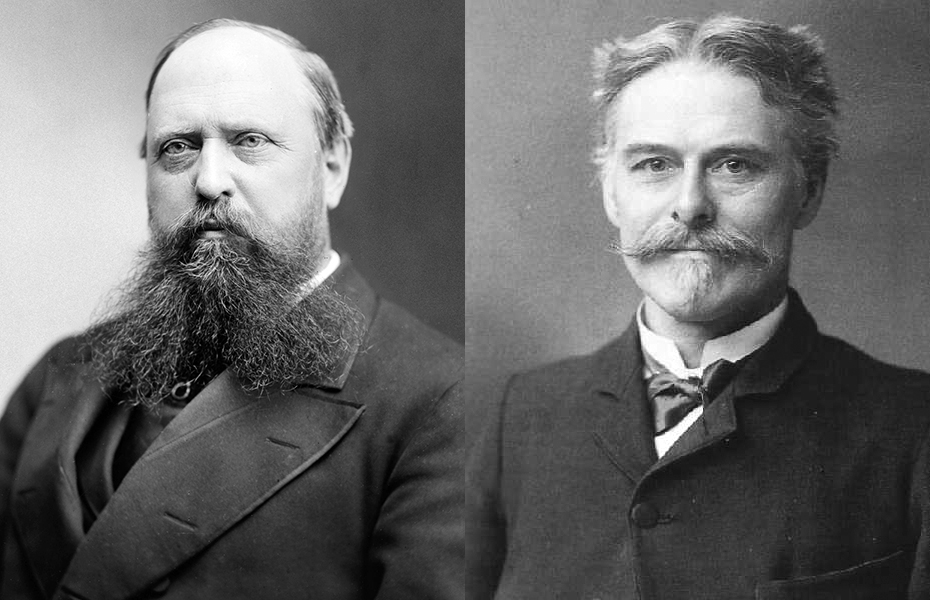
Colorado played a central role in one of the most colorful chapters in paleontological history – the Bone Wars of the late 1800s. This fierce competition between rival paleontologists Othniel Charles Marsh and Edward Drinker Cope led to some of the most significant dinosaur discoveries in American history. Their rivalry, marked by sabotage, theft, and bitter personal attacks, nevertheless resulted in the discovery of over 130 dinosaur species.
Many of the museum’s most prized specimens were discovered during this tumultuous period, when teams of fossil hunters scoured the Colorado landscape in search of the next great discovery. The competition was so intense that armed guards sometimes protected dig sites, and rival teams would dynamite fossil beds to prevent their opponents from accessing them. Despite the chaos, this period established Colorado as one of the world’s premier dinosaur fossil localities.
Educational Programs and Hands-On Learning

The Denver Museum doesn’t just display dinosaurs – it actively engages visitors in the process of paleontological discovery. The museum’s educational programs include fossil casting workshops where participants can create their own dinosaur teeth and claws to take home. Junior paleontologist programs allow children to experience the thrill of discovery through carefully designed excavation activities using real fossil materials.
School groups can participate in guided tours that align with state science standards, making the museum an extension of the classroom. Summer camps offer intensive week-long programs where students learn field techniques, fossil preparation, and scientific illustration. These hands-on experiences often inspire the next generation of paleontologists, ensuring that Colorado’s rich dinosaur heritage continues to be explored and understood.
Conservation and Research Initiatives
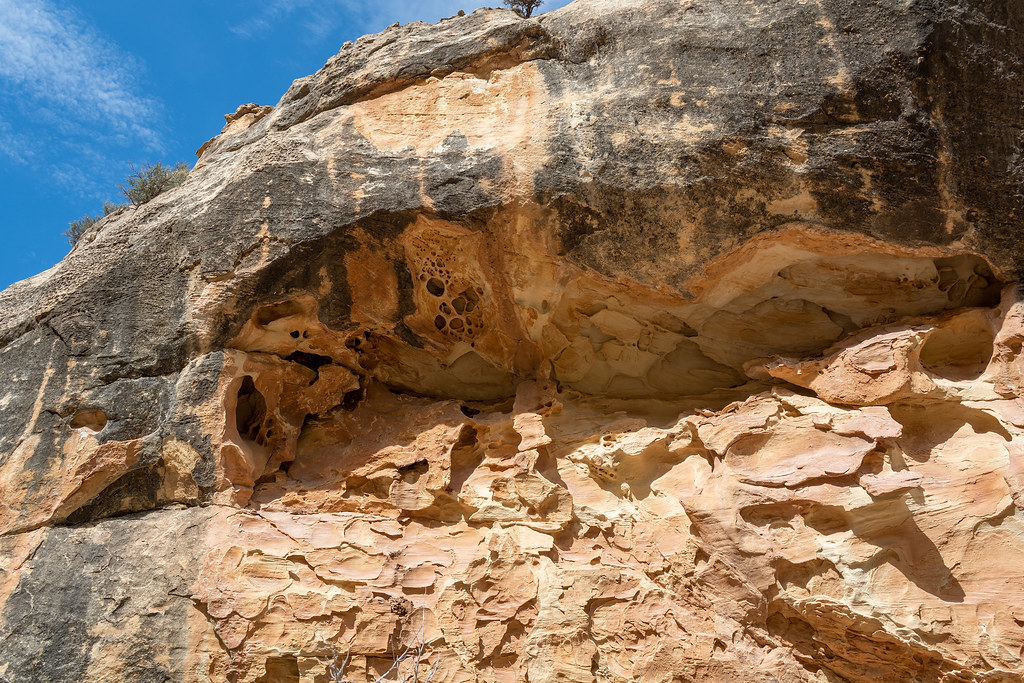
Beyond public display, the Denver Museum serves as a vital research institution dedicated to understanding and preserving our paleontological heritage. The museum’s collection includes over 200,000 specimens, many of which are housed in climate-controlled storage facilities and made available to researchers worldwide. Active field programs continue to discover new species and expand our understanding of ancient ecosystems.
Conservation efforts focus on protecting both existing fossils and potential dig sites from environmental threats and development pressures. The museum works closely with government agencies and private landowners to ensure that significant fossil deposits remain accessible for future generations of scientists. Digital archiving projects create permanent records of specimens, allowing researchers to study fossils without risking damage to the originals.
The Future of Dinosaur Discovery
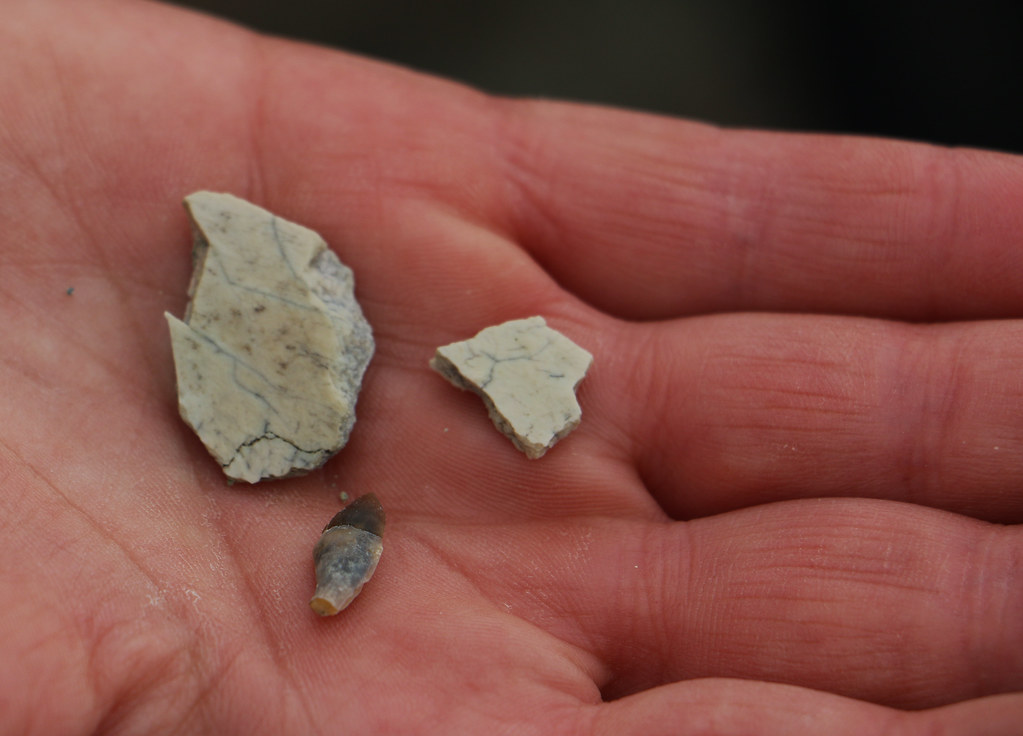
New technologies are revolutionizing paleontology, and the Denver Museum stands at the forefront of these developments. Advanced imaging techniques can now reveal soft tissue details that were previously invisible, while genetic analysis of ancient proteins provides insights into dinosaur biology that seemed impossible just decades ago. The museum’s research partnerships with universities worldwide ensure that Colorado remains a leader in paleontological innovation.
Ongoing excavations continue to yield surprising discoveries, including evidence of dinosaur behavior, social structures, and environmental adaptations. The museum’s commitment to public education means that these discoveries quickly find their way into new exhibits, keeping the displays fresh and relevant. As our understanding of dinosaurs continues to evolve, so too does the museum’s presentation of these ancient giants.
Planning Your Visit
A visit to Denver’s dinosaur exhibit requires careful planning to make the most of this incredible experience. The museum recommends allowing at least three hours to fully explore the paleontology galleries, though many visitors find themselves spending entire days immersed in the displays. Guided tours provide expert insights and behind-the-scenes access that enhance the experience significantly.
Special exhibitions often feature newly discovered specimens or traveling displays from other institutions, making each visit unique. The museum’s gift shop offers an extensive collection of dinosaur-themed merchandise, from scientifically accurate replica fossils to children’s books about paleontology. Many visitors find that their museum experience sparks a lifelong interest in dinosaurs and earth sciences.
A Journey Through Deep Time
Standing before these ancient giants, visitors can’t help but feel connected to the vast sweep of geological time that separates us from the age of dinosaurs. The Rocky Mountains, which now tower over Denver, were being formed during the final chapters of the dinosaur story, creating a tangible link between past and present. Each fossil represents not just an individual creature but an entire ecosystem that thrived for millions of years before vanishing in one of Earth’s greatest mass extinctions.
The Denver Museum’s dinosaur exhibit offers more than just a collection of bones – it provides a window into worlds that existed long before human civilization began. These ancient predators and their prey once ruled landscapes that would eventually become the American West, leaving behind clues that continue to reshape our understanding of life on Earth. In a world where technology often dominates our attention, there’s something profoundly moving about coming face-to-face with creatures that lived and died millions of years before our species even existed.
The next time you find yourself in Denver, take a moment to visit these silent ambassadors from deep time. Let yourself be transported to an era when giants walked the earth and the future of our planet hung in the balance. What stories might these ancient bones tell if they could speak?


